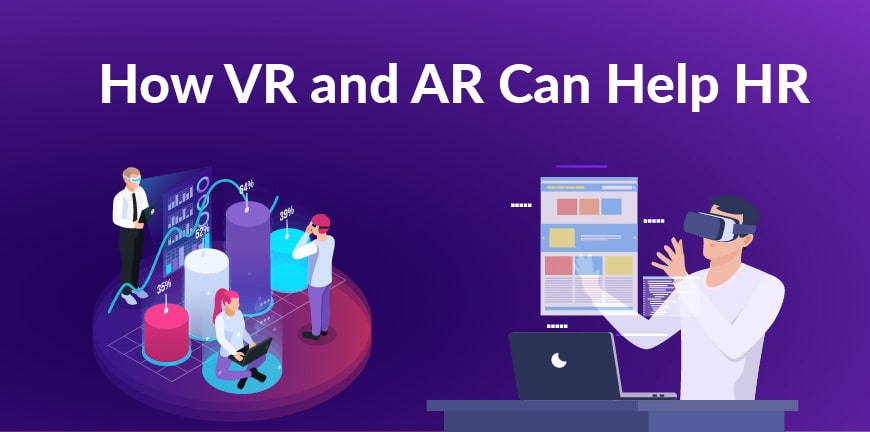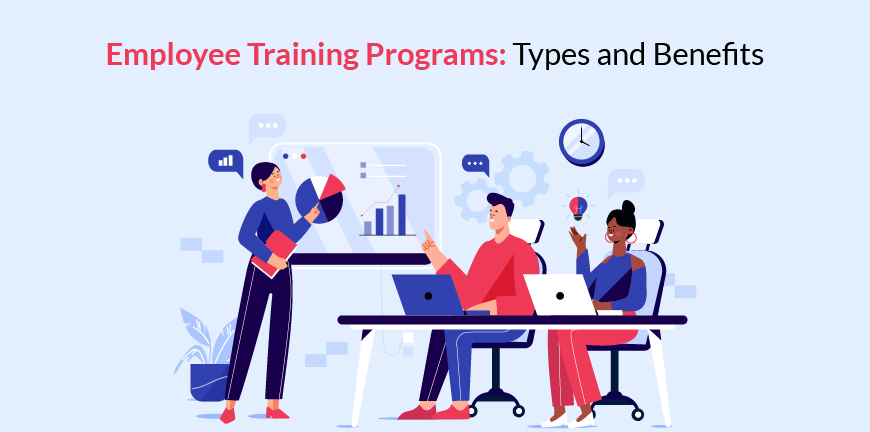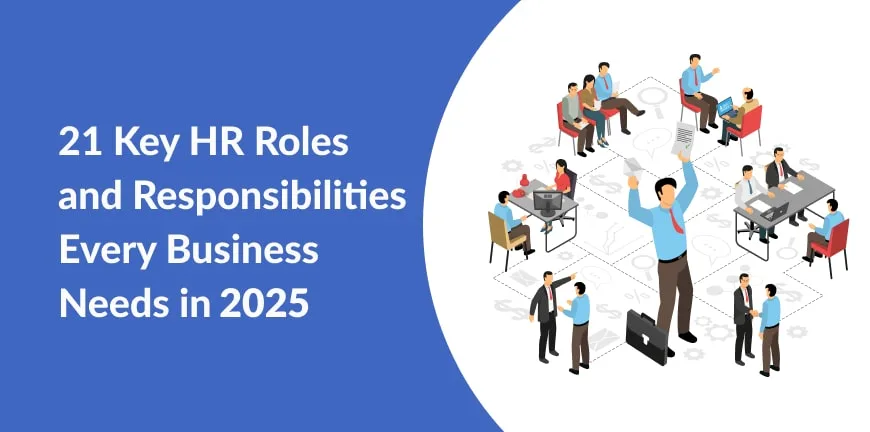
35 Ways VR and AR Can Help HR Improve Candidate and Employee Experience
12/12/2023
11 Types of Employee Training Programs
13/12/2023The pandemic is behind us, at least that is what the governments and health organisations state, even if the Covid-19 disease itself is not over. When the world came face to face with the Covid-19 pandemic, an often-debated topic, especially for organisations preparing for remote work and many of the other challenges it posed, was ‘how to build organizational resilience?’
Organisational resilience is defined as an organisation’s inherent ability to anticipate, respond and recover from sudden changes in its business environment. And achieving organisational resilience in the corporate space is something only a spaceman or spacewoman of an HR can achieve!
Organisational Resilience and Chandrayaan-3: A Comparison
While putting something up on the moon may have been a dream just a century ago for our country India, it no longer is, thanks to Chandrayaan-3. How does the difficulty of building organizational resilience for the thousands of companies that have cropped up in the last few years in India compare to that of putting a rover on the moon?
Answer: It does compare well; in fact, building organizational resilience is just as difficult as there are several external and internal factors that influence it just like putting a rover on the moon (which by itself was a triumphant achievement!). We must remember that this was also the third attempt by a steadfast and dedicated ISRO, when they finally got it right!
Organisational Resilience is Relative
Another thing about organizational resilience is that it is not an absolute outcome. In this, it differs from a moon landing. It could be a yes or no, but organisational resilience itself is a relative measure, it is always less or more and there is no organization that is absolutely resilient. So, achieving organisational resilience probably is not something that will ‘land’ HR a lot of cheers. It’s just a journey with no end.
4 Rs of Resilience
So, what exactly is a good way to understand resilience? This is crucial before we look at the strategies, we can use to build organisational resilience. Let’s start by looking at the 4 Rs of Resilience. These are a good way to define resilience. We can look at them as attributes of resilience at each stage of a company’s disruption management journey.
The 4 Rs of resilience are:
Robustness
How ready are you for an unexpected or expected change? How do you brace for impact when you are unsure how long it will last or how good or bad it will be for your organisation? These are some of the questions that you need to answer to weigh your readiness or robustness when having to deal with change.
Redundancy
This is the second attribute of resilience in the prevention phase. Considering that the disruption will happen, how quickly can you move to an alternative process or plan of action. Do you have people with the necessary skills to manage a disruption? Who will be the stakeholders in such a situation?
Resourcefulness
This is the next attribute of resilience and here the response phase begins. Once the disruption has happened, this is how you respond. How creative and agile can those people be? How tenaciously do they respond? These are some of the questions that you need to answer to build this attribute of resilience in your organisation.
Rapidity
This the next attribute of resilience and is for the next stage of the response phase. This is another attribute of resilience. Are you able to recover rapidly from a disruption? How much time does it take you to recover from a disruption? These are some of the questions you must ask here.

Again, there are two different approaches to resilience – proactive and reactive. What’s the good news here? They exclude each other depending on the situation. In this article, we will discuss when to apply each, and then some simple strategies, that HR can take advantage of, to build organisational resilience.
Proactive and Reactive Resilience
In all workplaces there are two types of people – those who are proactive, recognizing opportunities in what happens around them, responding to them with a clear plan, and those who are reactive, choosing to act when the situation demands it. Organisational resilience also can be of two types, proactive and reactive.
Though it might seem that the proactive ways of dealing with challenges is the more preferred one, this is not necessarily true. Many leaders of leading companies in the world may adopt a reactive approach too. Since this is an approach, remember that someone who is reactive could be proactive as well at times.
Many organisations today are trying to adopt a proactive approach to resilience. But the truth is, they cannot do without reactive resilience. In fact, it is the failures that crop from adopting a reactive resilience approach that help build pillars that form the foundations of a proactive resilience strategy, where one anticipates a disruption and plans for it. Sometimes a challenge is a very new one, one that cannot be anticipated; in such cases too, companies would have to use a reactive approach.
So how can they be used by HR to build organisational resilience? Use proactive resilience when you must prevent disruptions and protect the system. ‘If the challenge is already made’, use a reactive approach to mitigate its effects and ensure that you can adjust and survive. An example of a proactive approach is engaging employees in fun activities, regular training and knowledge sharing programs etc. Examples of reactive approaches is addressing unpredictable events such as resignations and layoffs and compliance issues.
5 Simple Strategies to Build Organizational Resilience
Organisational resilience can be achieved in external ways, as an example, through partnerships with other organisations. However, in our discussion of strategies to build organisational resilience, we will be looking at those which involve modifying what is internal to the organization, to achieve organisational resilience.
Build Flexibility and Adaptability
To build flexibility and adaptability at the workplace, HR must redesign leadership training programs to ensure that the next batch of leaders can respond to a crisis effectively. Hiring must also include individuals who have an ability to be flexible and adapt to changes in the workplace and the business environment. Though there are proactive elements to both these strategies, this is a competency that must work in a reactive mode as well, which means that HR must conduct mock activities which focus on how employees react to new and unforeseen challenges.
Encourage and Reward Collaboration
Encouraging collaboration is one thing, but to make it happen, the right infrastructure must be in place. To make this happen, HR must consult with technology managers to see how the workspace and its performance can be improved. Another thing that is necessary is digital competency. Without digital competency, it is difficult to make use of the infrastructure properly, and in turn, to facilitate proper collaboration. The third and most important thing is to reward collaboration. This will help ingrain a collaborative and helping culture at the workplace, to get things done faster and in an easier manner. Studies show that diverse teams work a lot better than non-diverse teams in a crisis. So, try to ensure diversity in hiring as much as possibly without giving up true talent.
Encourage Effective and Transparent Communication
Effective and transparent communication helps build bridges where there are none. It prevents uncalculated risks on behalf of employees (for example, an employee not knowing about health cover and opting for treatment without it), ineffective actions at work (for example, an employee not focusing enough on work because of a lack of focus building and missing project deadlines) and problems in employee relations (between HR and the employee). To achieve such communication, you must have a great communications stack, use easy and unambiguous language, and communicate in a timely manner in the most accessible medium.
Build Visionary Leadership and Management
Build visionary leadership through leadership programs that invite people to ask questions openly, be it related to processes or people. Also observe how each employee in your company responds to change during these leadership programs. Next, articulate your companies vision statement clearly, to see if the vision of these future leaders aligns with that of the company or the future.
Visionary leaders may also have a difficulty in managing day to day processes, but this must not be the case; such flexibility is key to ensure that a visionary is also a successful leader. Sometimes visionary ideas don’t translate well too. As Steve Jobs said, “To me, ideas are worth nothing unless executed. They are just a multiplier. Execution is worth millions.” In other words, if you are thinking of something as revolutionary as an iPhone, make it!
Inculcate Risk Management Skills
Risk management involves a lot of patience and self-management through a higher level of emotional intelligence. Risks also demand strategic thinking and creative problem-solving to mitigate them. These are the qualities that HR must look for in people during the hiring phase, especially for senior positions, what it must reward during Rewards and Recognition, and the aspects that must be worked on for each employee during training and mentoring sessions.
Use the four Rs of resilience as a benchmark in every assessment you make as you build on these competencies at the workplace. Pose some or all the questions we cited under each ‘R’ to know how prepared you are. What is the strength to resist or adapt to an unfavourable impact? Once the impact has been sustained, what is the present ability to undertake alternative actions? As cited earlier, these are a couple of the questions that must be asked.
Closing Words
Resilience is the golden trait that comes to the fore when organisations are challenged. For this reason, it is not something that is celebrated every day. Sometimes, when it is a continuous process of responding or reacting to challenges, it is not even celebrated. But it will bring HR great pride to state that their organisation is resilient and to work toward making it one, if it is not already so. The path is long and hard, and fraught with the ghosts of self-doubt and indecisiveness, but the results are praiseworthy too!
Contact Us For Business Enquiry

Rajkumar Shanmugam
Rajkumar Shanmugam is the Head of HR at ALP Consulting, bringing over 19 years of comprehensive HR leadership experience across India and international markets. His expertise spans talent acquisition, employee relations, performance management, compliance, and HR transformation. Rajkumar has a proven track record of driving people-centric initiatives, enhancing workplace culture, and aligning HR strategy with business goals. With extensive experience in US staffing operations and global mobility, he continues to lead organizational excellence through innovation and employee engagement.




